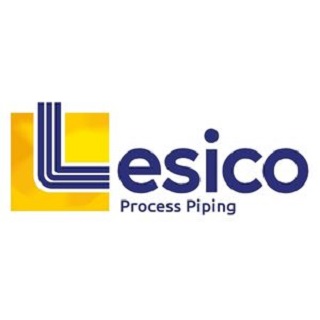Pipeline installation projects play a crucial role in the transportation of vital resources like oil, gas, water, and chemicals. With the increasing global demand for these resources, the need for efficient, safe, and sustainable pipeline infrastructure is greater than ever. This blog delves into the essential steps involved in pipeline installation, the challenges encountered, and the best practices that ensure project success.
Understanding the Importance of Pipeline Installation Projects
Pipelines are essential for moving resources across vast distances with minimal environmental impact compared to alternative methods. They support industries such as energy, agriculture, and municipal water systems, playing a foundational role in modern infrastructure. Installing a pipeline, however, involves more than just laying pipes—it requires meticulous planning, adherence to strict regulatory standards, and a focus on sustainability.
Key Phases in Pipeline Installation Projects
Pipeline installation is a multi-phase process involving detailed steps that ensure the pipeline functions efficiently and safely.
a. Project Planning and Design
- Surveying and Route Selection: Geographical surveys help identify the best pipeline route, taking into account natural barriers, land use, and environmental regulations.
- Environmental and Regulatory Compliance: Compliance with local, national, and international environmental regulations is mandatory to prevent ecological damage.
- Risk Assessment and Safety Planning: Effective risk management strategies mitigate potential issues that could arise during or after installation.
b. Material Selection and Sourcing
- The choice of materials depends on factors like pipeline content, pressure requirements, and environmental conditions. High-quality materials enhance the longevity of the pipeline and reduce maintenance needs.
c. Trenching and Excavation
- Preparing the Pipeline Path: Excavation involves clearing and grading the route to ensure the pipeline can be installed smoothly. In areas with sensitive environments, trenchless methods may be used to minimize disruption.
- Trenching Techniques: Open-trench and horizontal directional drilling are commonly used depending on the terrain and project requirements.
d. Pipe Assembly and Welding
- Assembly Line Processes: Pipes are laid out, welded together, and inspected before being installed. Welding must be performed by certified professionals to ensure the pipeline’s structural integrity.
- Non-Destructive Testing (NDT): Techniques like X-rays and ultrasonic testing ensure each weld meets safety and performance standards.
e. Coating and Corrosion Protection
- Protective Coatings: Coatings are applied to prevent corrosion from soil, water, and chemicals. The coating method depends on pipeline specifications, climate, and other conditions.
- Cathodic Protection Systems: A cathodic protection system may be used to safeguard pipelines against corrosion in areas with high moisture or salinity.
f. Lowering-In and Backfilling
- Pipeline Lowering: After assembly, the pipeline is lowered into the trench using specialized equipment that minimizes stress on the structure.
- Backfilling and Compaction: The trench is carefully filled, and the soil is compacted to restore the ground to its natural state and prevent soil erosion around the pipeline.
g. Hydrostatic Testing and Commissioning
- Pressure Testing: Once installed, pipelines undergo hydrostatic testing, where they are filled with water and pressurized to check for leaks.
- Final Inspections and Commissioning: After testing, the pipeline is connected to its endpoints, and final inspections are carried out to ensure readiness for operation.
Challenges Faced in Pipeline Installation Projects
Pipeline projects face various challenges, both technical and environmental, that can impact timelines and budgets.
a. Environmental Impact and Land Access
- Pipelines often cross diverse landscapes, including private lands and ecologically sensitive areas. Balancing land access rights with environmental concerns is essential for smooth project execution.
b. Community and Stakeholder Engagement
- Effective communication with local communities and stakeholders can prevent opposition and ensure a smoother installation process. Public consultations, transparency about environmental measures, and local employment can build trust.
c. Regulatory Compliance
- Different countries have specific safety, environmental, and operational regulations. Non-compliance can lead to delays, fines, or even project cancellations.
d. Weather and Terrain
- Extreme weather conditions and challenging terrains, such as mountains or rivers, can hinder installation and increase project costs.
e. Material Quality and Supply Chain Management
- High-quality materials are crucial, but supply chain disruptions can lead to delays. Establishing multiple suppliers and contingency plans can mitigate these risks.
f. Safety and Risk Management
- Safety is paramount in pipeline projects, with risks including gas leaks, fires, and worker injuries. Comprehensive safety programs and adherence to strict safety protocols are essential for protecting both workers and the environment.
Best Practices for Successful Pipeline Installation Projects
Implementing best practices can help overcome challenges, ensuring the pipeline is installed efficiently and safely.
a. Invest in Thorough Planning and Project Management
- Early-stage planning with a clear timeline, budget, and resource allocation helps prevent overruns and delays.
b. Adopt Advanced Technologies
- Innovations like GPS-guided drilling, drone surveillance, and AI-powered predictive maintenance improve accuracy, reduce labor costs, and enhance project oversight.
c. Focus on Skilled Workforce and Training
- Hiring experienced engineers, welders, and safety personnel and providing continuous training is essential for high-quality pipeline installation.
d. Implement Strong Environmental and Safety Protocols
- Adhering to environmental protection measures and using best-in-class safety practices minimize ecological impact and ensure compliance with regulatory standards.
e. Engage in Effective Stakeholder Communication
- Regular communication with local communities, regulators, and stakeholders ensures transparency and cooperation, reducing the risk of disputes.
f. Continuous Quality Assurance and Testing
- Regular inspections and testing at every stage of installation prevent future maintenance issues, saving time and resources in the long run.
Sustainability in Pipeline Installation
With growing awareness of environmental issues, pipeline projects are incorporating sustainability initiatives:
- Environmentally Friendly Coatings and Materials: Using biodegradable or low-impact materials to minimize environmental damage.
- Trenchless Installation Techniques: Horizontal drilling and other trenchless methods reduce soil disruption and preserve ecosystems.
- Monitoring and Maintenance Programs: Advanced sensors and monitoring systems detect leaks early, reducing environmental harm and extending the pipeline’s life.
Conclusion
Pipeline installation projects are complex undertakings that require meticulous planning, innovative technologies, and a focus on environmental and community impact. By following best practices, understanding the challenges, and prioritizing sustainability, companies can achieve successful pipeline installations that meet the needs of today while safeguarding the environment for future generations. Whether transporting energy, water, or industrial resources, pipelines are indispensable to modern infrastructure—and when installed thoughtfully and efficiently, they can continue to provide essential services safely and reliably for years to come.




